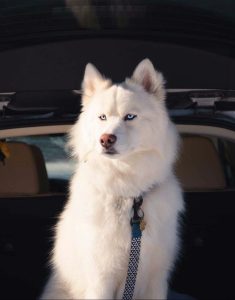Dogs jumping on people can be both a nuisance and a safety concern. While it’s often an expression of excitement and affection, it’s important to train your dog to greet people politely. Here’s a detailed guide to help you train your dog to stop jumping on people effectively.



H1: Understanding Why Dogs Jump on People
Excitement and Greeting
Dogs often jump to greet people and show excitement. It’s their way of saying hello and seeking attention.
Attention-Seeking Behavior
Jumping is a behavior that has likely been reinforced by receiving attention, even if it’s negative.
H1: Preparing for Training
Consistency is Key
- Uniform Response: Ensure everyone in the household responds to jumping in the same way to avoid confusing your dog.
- Clear Commands: Use consistent commands and signals during training.
Gather Training Supplies
- Treats and Rewards: Have high-value treats ready to reward good behavior.
- Leash: A leash can help control your dog during the initial stages of training.
H1: Step-by-Step Guide to Training Your Dog Not to Jump
Step 1: Teach Alternative Behaviors
Teach the “Sit” Command
- Basic Command: Ensure your dog knows the “sit” command reliably.
- Reward Sitting: Reward your dog with treats and praise every time they sit on command.
Step 2: Ignore Jumping Behavior
Withhold Attention
- No Reward: When your dog jumps, turn away and avoid making eye contact. Do not push your dog away, as this can be seen as attention.
- Wait for Calm: Wait until your dog has all four paws on the ground before giving attention. Once they are calm, reward with a treat and praise.
Step 3: Use a Leash to Control Jumping
Leash Training
- Short Leash: Keep your dog on a short leash during greetings to prevent them from jumping.
- Step on the Leash: Gently step on the leash so that your dog cannot jump up, but can still move comfortably.
H2: Reinforcing Positive Behavior
Step 1: Consistently Reward Calm Greetings
- Immediate Reward: When your dog greets someone calmly with all four paws on the ground, reward them immediately with a treat and praise.
- Practice Regularly: Consistently practice this with family members, friends, and even strangers.
Step 2: Use the “Off” Command
- Introduce the Command: When your dog starts to jump, say “off” firmly but calmly.
- Reward Compliance: As soon as your dog stops jumping and has all four paws on the ground, reward them with a treat and praise.
H2: Addressing Common Challenges
Overexcited Dogs
- Pre-Greeting Calm: If your dog is overly excited, wait until they calm down before allowing them to greet people. You can practice the “sit” command to help them settle.
- Short Training Sessions: Keep training sessions short to prevent your dog from becoming overly excited or frustrated.
Inconsistent Behavior
- Regular Practice: Ensure regular practice in various environments to reinforce the behavior.
- Involve Everyone: Make sure everyone who interacts with your dog understands and follows the training protocol.
H2: Advanced Training Techniques
Use Clicker Training
- Clicker and Treats: Use a clicker to mark the moment your dog keeps all four paws on the ground, followed by a treat. This helps your dog understand the desired behavior more clearly.
- Consistency: Be consistent with clicker training to reinforce positive behavior.
Increase Difficulty Gradually
- Distraction Training: Gradually introduce more distractions, such as new environments and different people, to ensure your dog can maintain calm behavior in various situations.
- Extended Duration: Increase the duration your dog must keep all four paws on the ground before receiving a reward.
H2: Conclusion
Training your dog not to jump on people requires patience, consistency, and positive reinforcement. By teaching alternative behaviors, consistently ignoring jumping, and rewarding calm greetings, you can help your dog learn to greet people politely. Remember to practice regularly and involve everyone who interacts with your dog to ensure consistent behavior.
FAQs
- How long does it take to train a dog not to jump on people?
- The time required varies depending on your dog’s age, temperament, and previous training. With consistent practice, most dogs can learn within a few weeks to a few months.
- What if my dog jumps on guests despite training?
- Ensure guests follow the same training protocol by ignoring jumping and rewarding calm behavior. You may need to use a leash initially to control your dog during greetings.
- Can older dogs be trained not to jump?
- Yes, older dogs can learn new behaviors with patience and consistency. Training may take longer than with puppies, but it is possible.
- Should I use punishment to stop jumping?
- No, punishment can create fear and anxiety. Positive reinforcement and consistent training are more effective and humane methods.
- How can I prevent my dog from jumping when I come home?
- Ignore your dog when you first come home until they calm down. Once they are calm and have all four paws on the ground, greet them and reward their calm behavior.